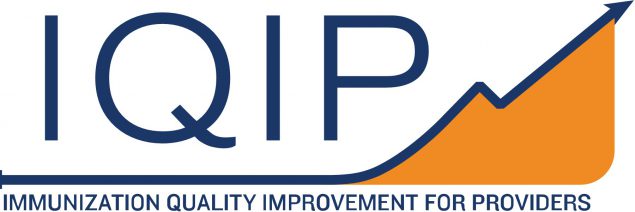Benefits of Immunization QI Projects
Quality improvement (QI) programs, such as IQIP, analyze processes and use a systematic approach to improve performance. Like other QI programs, the IQIP program is based on these basic steps:
- State the problem and desired result
- Use data to understand the problem
- Identify strategies for improvement
- Implement strategies and refine as needed
- Evaluate outcome
Beyond simply increasing vaccination coverage rates, conducting immunization quality improvement can provide additional benefits. Here are some broader effects that can result from immunization QI program like IQIP.

Some vaccine-preventable diseases, like pertussis (whooping cough), chickenpox, and COVID-19, remain common in the United States. However, many other diseases, such as polio and diphtheria, are almost forgotten thanks to vaccines. If we stopped vaccinating, the few cases we have in the United States could very quickly become tens or hundreds of thousands of cases. Children who don’t receive all vaccinations and are exposed to a disease can become seriously sick and spread it through a community. On-time vaccination throughout childhood is essential because it helps provide immunity before children are exposed to potentially life-threatening diseases.
COVID-19 disrupted both in-person learning and routine well-child visits for many children. As a result, too many children have fallen behind on receiving recommended vaccines. In addition to immunization provider site closures and cancellations of well-child visits, public sector vaccine ordering data show a 14% overall drop in vaccine orders in 2020-2021 compared to 2019. Measles vaccine ordering is down by more than 20%. These changes indicate that children may be falling behind schedule on vaccinations thus increasing susceptibility to vaccine-preventable disease. As immunization programs restart routine activities and providers resume ordering and administering vaccines, the IQIP program can play a role in assisting VFC providers in bringing their children up to date as quickly as possible.
Target childhood vaccination coverage goals could be achieved if all children receive all the vaccines they are eligible for at the time of their vaccination visit (Zhao et al 2016 Vaccine). Implementing provider-based interventions to increase vaccination coverage such as reminder/recall and assessment of vaccine status at every visit can help avoid missed opportunities to vaccinate and reinforce that vaccination is important.
Vaccine confidence is the belief that vaccines work, are safe, and are part of a trustworthy medical system. Without some level of confidence, people will not move toward receiving a vaccine for themselves or their children. By actively communicating their support of vaccination in their practices, providers are playing a key role in increasing vaccine confidence in their communities. Strong confidence in vaccines within communities leads to more adults, adolescents, and children getting vaccinated ― which leads to fewer illnesses, hospitalizations, and deaths.
Coverage assessments conducted at the provider level can be used to establish a baseline snapshot of vaccination performance and can reveal strengths and opportunities for performance improvement for specific vaccines. Providers can set coverage goals at challenging but achievable levels above the baseline to work toward, then monitor progress by conducting subsequent coverage assessments at regular intervals. This approach allows providers to determine which vaccination strategies help the most to increase vaccine uptake among their patients.